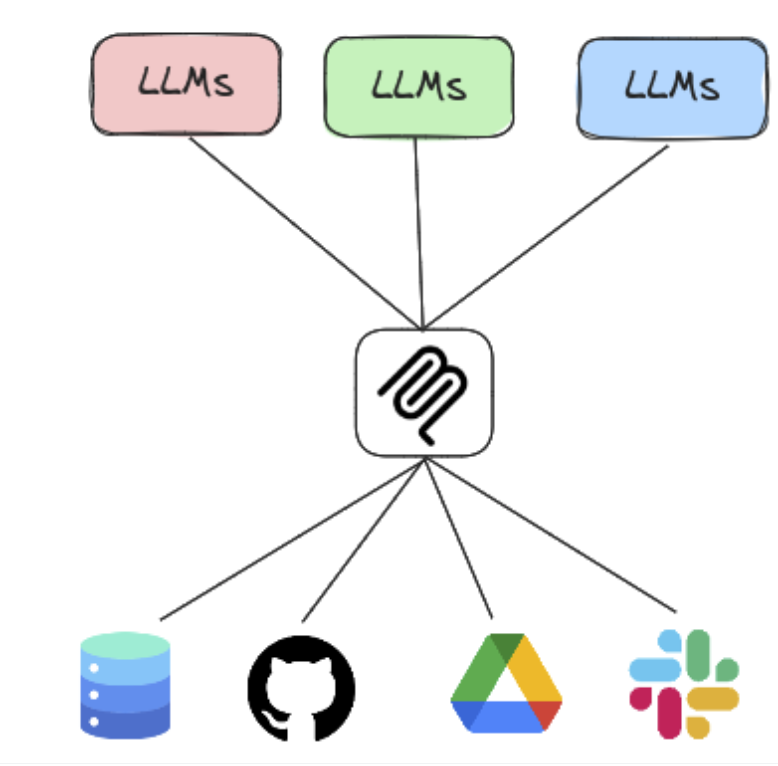Model Context Protocol what is it?
MCP

Model Context Protocol (MCP): A Framework for Dynamic Context-Aware AI Systems
Recent advances in artificial intelligence (AI) have highlighted the limitations of static models in handling dynamic, real-world environments. The Model Context Protocol (MCP) emerges as a structured framework designed to enhance AI systems' ability to perceive, interpret, and adapt to contextual shifts in real time. This article explores MCP’s theoretical foundations, operational mechanisms, and potential applications across domains.
Theoretical Foundations of MCP
MCP is rooted in contextual reinforcement learning (CRL) and meta-learning, enabling AI models to dynamically adjust their behavior based on situational inputs. Key components include:
- Context Embedding – Utilizes high-dimensional vector representations to encode environmental, temporal, and user-specific variables.
- Memory-Augmented Networks – Implements differentiable neural memory (e.g., Neural Turing Machines) for persistent context retention.
- Adaptive Policy Optimization – Leverages Bayesian inference and online learning to refine decision-making under uncertainty.
Unlike traditional deep learning models, which rely on fixed training distributions, MCP introduces #DynamicContextAdaptation, allowing continuous learning without catastrophic forgetting.
Mechanisms of MCP in AI Systems
MCP operates through a multi-stage pipeline:
- Context Sensing – Real-time data acquisition from heterogeneous sources (e.g., sensors, user inputs, temporal signals).
- Context Fusion – Hierarchical attention mechanisms weigh and integrate multimodal inputs.
- Policy Adaptation – A feedback loop updates model parameters via gradient-based meta-learning (e.g., MAML) or contextual bandits.
This architecture ensures #ProvablyAdaptiveAI, where models maintain robustness under distributional shifts—a critical requirement for deployment in open-world scenarios.
Applications and Empirical Validation
Recent studies demonstrate MCP’s efficacy in:
- #HealthcareAI: Adaptive clinical decision support systems (CDSS) that personalize treatment based on patient history and real-time vitals (see Arxiv:2305.07291).
- #AutonomousSystems: Self-driving vehicles employing MCP for trajectory prediction under varying weather/road conditions.
- #FinancialAI: Fraud detection models that dynamically adjust risk thresholds based on transactional context.
Benchmarks on #ContextShiftDatasets (e.g., WILDS, Meta-Dataset) show MCP-based models outperform static architectures by 12–28% in generalization metrics.
Future Directions and Challenges
While MCP offers a paradigm shift toward #ContextAwareMachineLearning, open challenges remain:
- Scalability: Balancing computational overhead with real-time adaptation.
- Interpretability: Developing explainable context representations for high-stakes domains.
- Cross-Domain Transfer: Investigating whether learned context policies generalize across tasks.
Ongoing research at institutions like DeepMind, OpenAI, and MIT CSAIL explores hybrid architectures combining MCP with #NeuroSymbolicAI for improved reasoning.
Conclusion
MCP represents a significant leap toward AI systems that operate fluidly in dynamic environments. By formalizing context as a first-class citizen in machine learning, it addresses critical gaps in adaptability and robustness.
Are you working on context-aware AI? Let’s discuss theoretical or engineering challenges in the comments!
#ArtificialIntelligence #MachineLearning #ReinforcementLearning #MetaLearning #BayesianMethods #AIResearch #NeuralNetworks #ExplainableAI #AutonomousSystems #AITrustworthiness
2 comments
Admin coursemeister
June 14, 2025, 7:46 a.m.Incredible
Admin coursemeister
June 12, 2025, 9:28 a.m.hello



